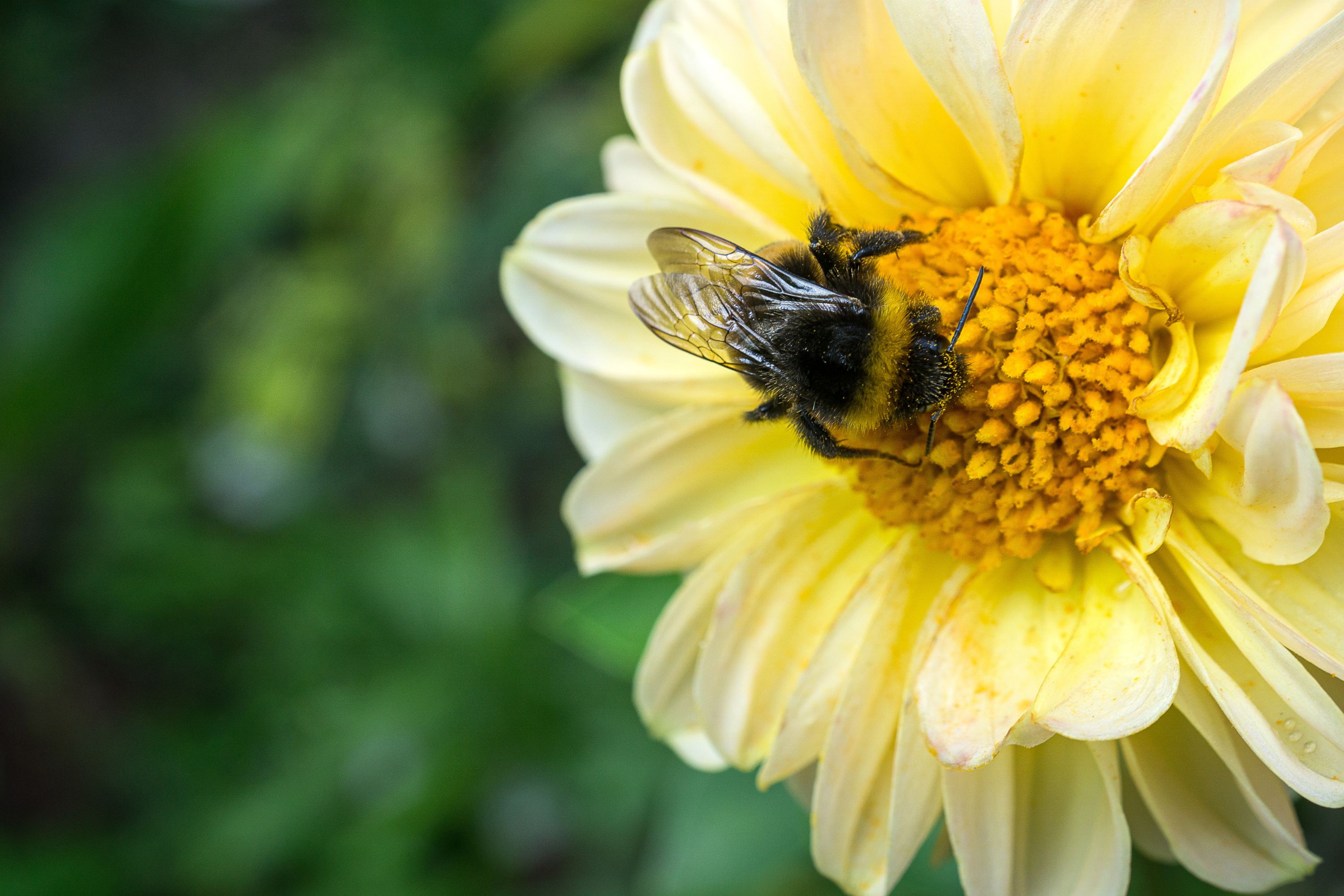Populations Of The Rusty Patched Bumblebee Have Dropped Nearly 90% In Just Two Decades, But Scientists Are Working To Help Recover This Endangered Species

The rusty patched bumblebee, named for the reddish-brown smudge on the backs of male and worker bees of the species, is endangered. Scientists are studying the species to try and find ways to work toward their recovery.
According to the U.S. Fish and Wildlife Service, they were once common across the eastern United States and Canada, but their populations have dwindled by almost 90 percent over two decades.
Now, they are only found in the Upper Midwest and Northeast United States. The rusty patch became the first bumblebee in the United States to be listed as endangered in 2017.
Scientists are collecting genetic material from rusty patched bumblebees by snipping off tiny pieces of their legs. This is a very common method and does not harm the creatures. Each sample is then sent to a lab, where DNA analysis will be conducted.
The tests will assist in estimating the number of colonies, patterns of inbreeding and the health and genetic diversity of rusty patched bumblebee populations. The whole initiative began in 2020 when bumblebee researchers held a meeting in Minnesota. They aimed to identify conservation tools that could help save the species.
After completing a comprehensive genetic study of the bumblebees, they found several ways to aid the conservation of the species. However, concerns were also raised about their ability to survive. The study showed that the number of rusty patched bumblebees was low, even in places they frequently inhabited.
“We’ve seen the Upper Midwest as the stronghold of the species, but what we’ve seen from the genetic data is that even within these strongholds for the species, they are still far fewer colonies than we might have expected,” John Mola, the lead author of the study and an ecologist at Colorado State University, said.
Bumblebee populations are measured by colonies instead of individuals because only queens can create offspring.
Each spring, queen bees will come out of hibernation to make nests, where they produce female workers whose purposes are to forage, nurse larvae, and protect the nest. The queens switch to producing reproductive individuals later in the summer.
SergeVo – stock.adobe.com – illustrative purposes only, not the actual bee
Sign up for Chip Chick’s newsletter and get stories like this delivered to your inbox.
These individuals consist of males and new queens. The following year, they will form their own colonies. A colony can contain more than 100 individuals. Having too few colonies puts rusty patched bumblebees at risk.
They become more vulnerable to local extinction caused by fires on the prairies where they live. So, land managers must be more careful when practicing controlled burns to manage prairie growth.
In addition, fewer colonies mean that the removal of just one queen from an area could lead to local extinction, according to the study.
But, the risk might be worth it if the proper protocols are established. That way, captive breeding programs can be created in the future, which would help elevate their numbers and increase genetic diversity.
Among the bumblebees, there were also clear signs of inbreeding. A lack of genetic diversity makes them more susceptible to environmental changes and diseases.
Apparently, 15 percent of males were diploid with two sets of chromosomes, while male bumblebees usually are haploid with one set of chromosomes.
Currently, it is unclear whether the level of inbreeding in the bees is abnormal. The researchers plan to find out by examining museum specimens from before the 1990s and seeing what their inbreeding rates were like.
The researchers hope that the study will inform policy decisions for pollinator conservation. Perhaps we’ll be able to see more rusty patched bumblebees around in the years to follow.
Welcome to Billionaire Club Co LLC, your gateway to a brand-new social media experience! Sign up today and dive into over 10,000 fresh daily articles and videos curated just for your enjoyment. Enjoy the ad free experience, unlimited content interactions, and get that coveted blue check verification—all for just $1 a month!
Account Frozen
Your account is frozen. You can still view content but cannot interact with it.
Please go to your settings to update your account status.
Open Profile Settings